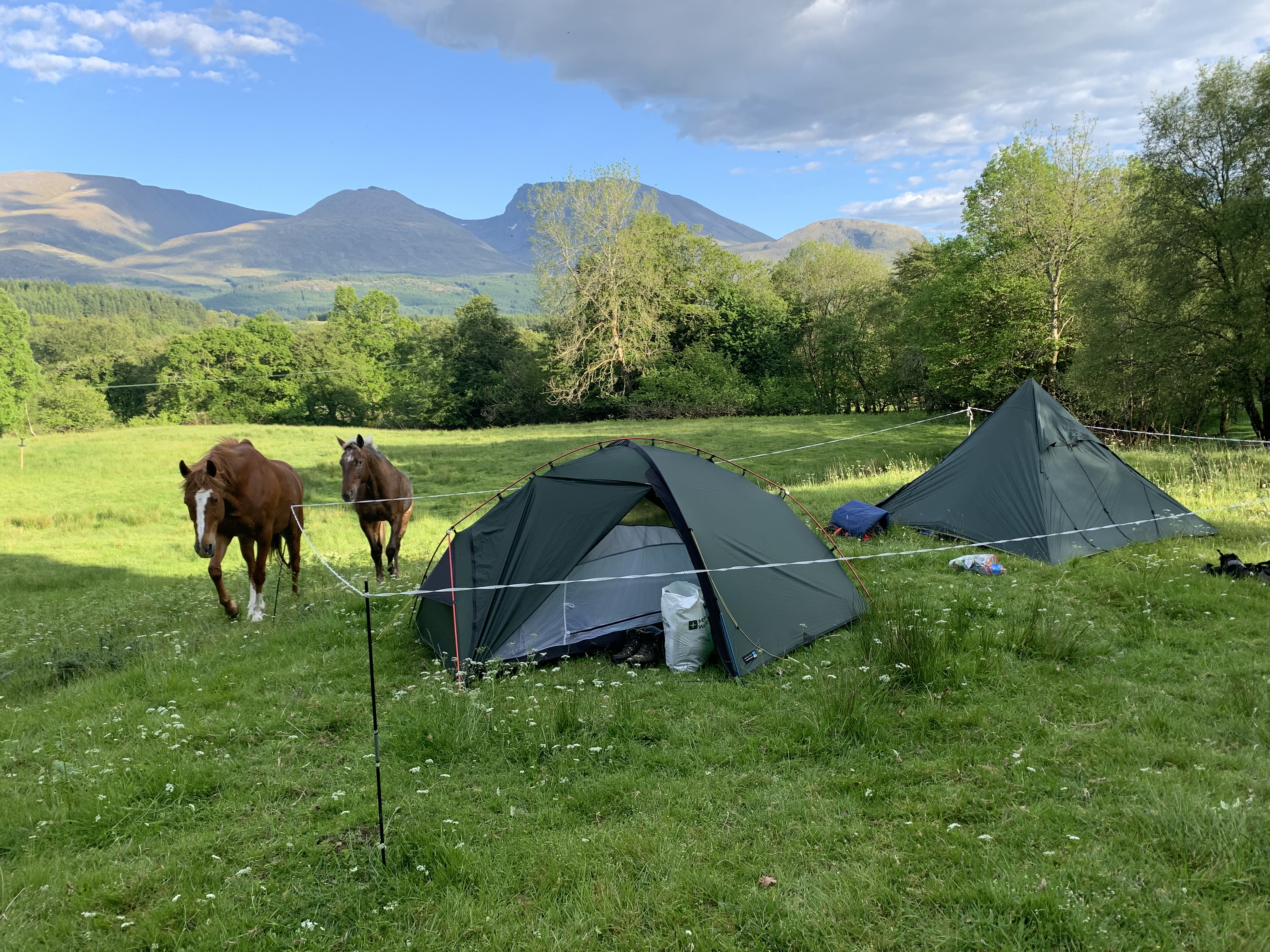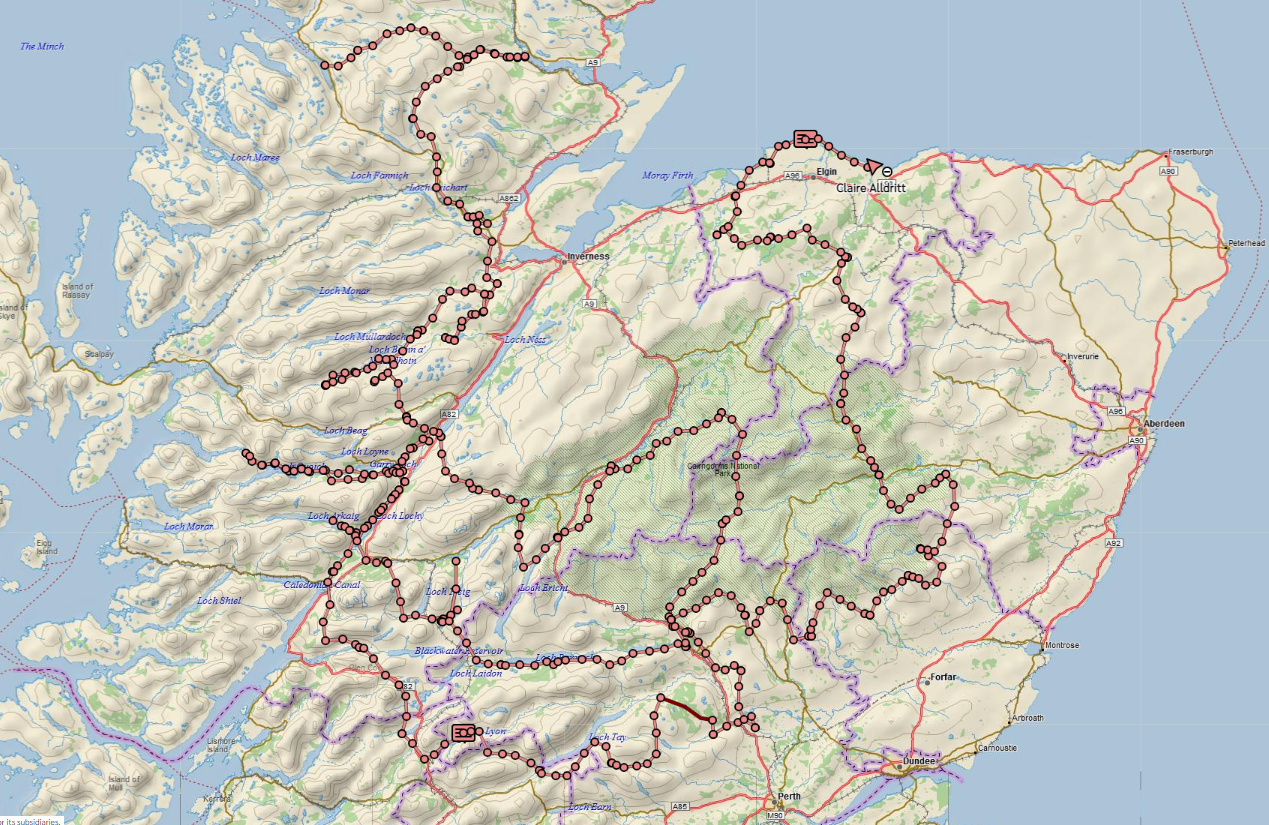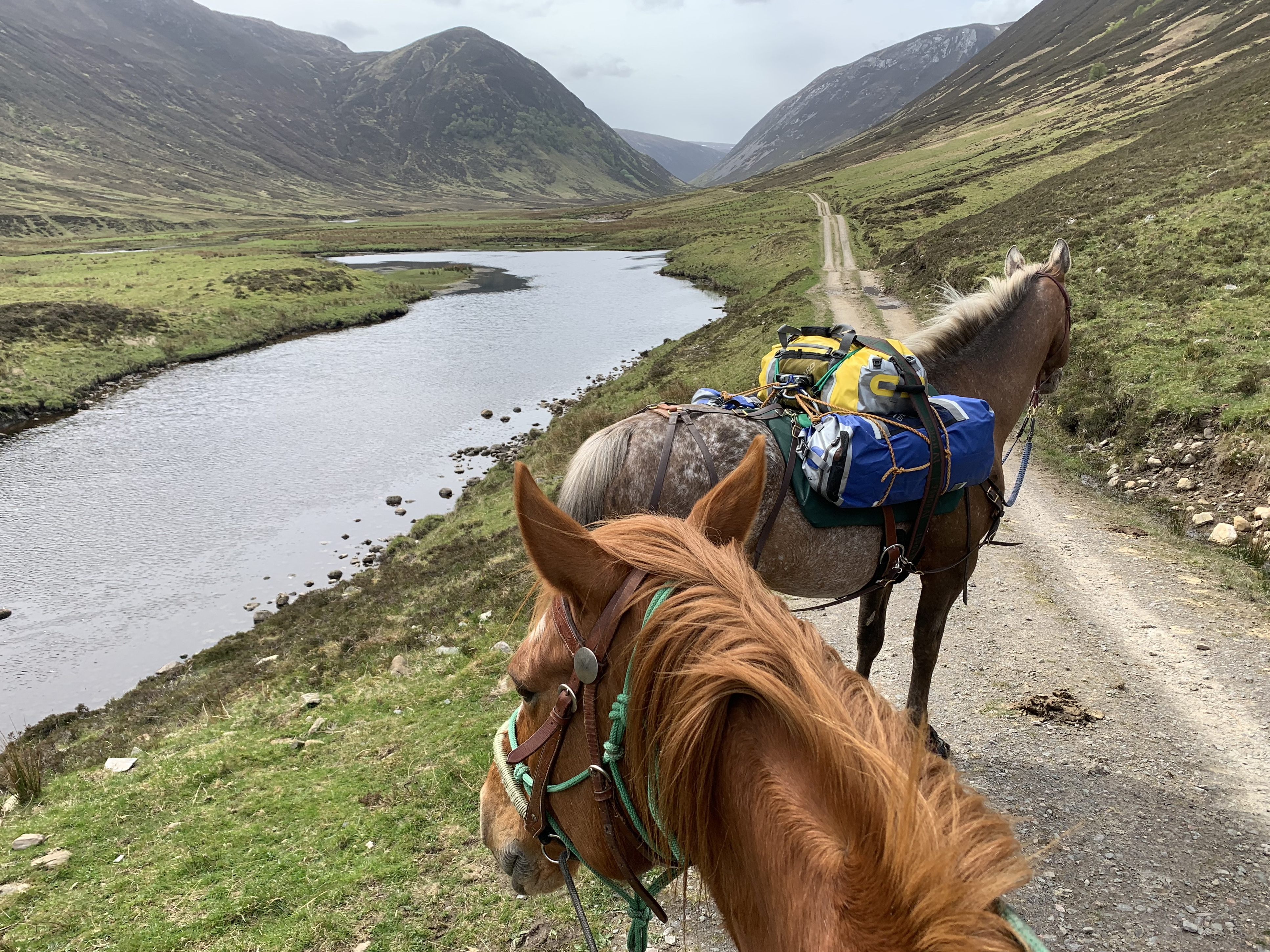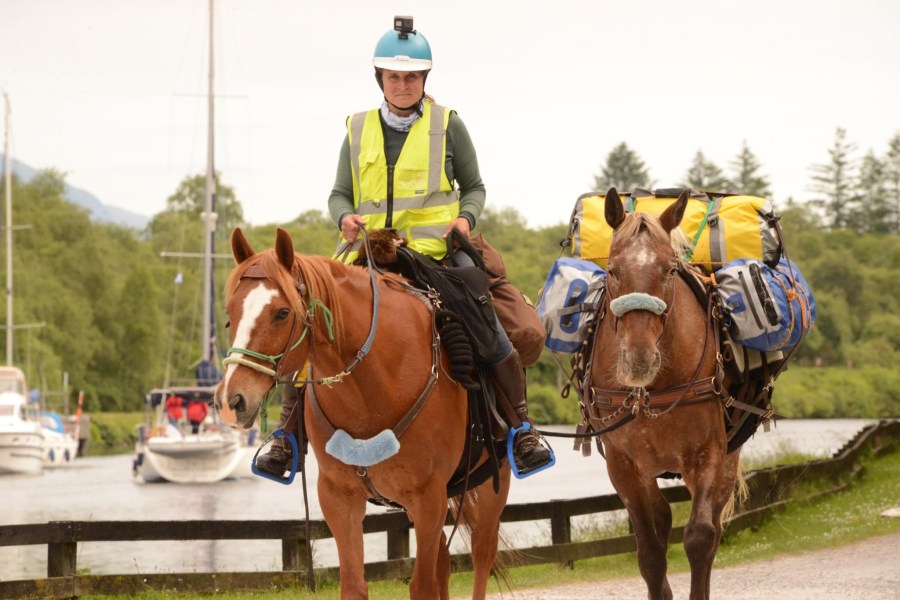A paramedic has complied the Hack 1,000 Miles challenge in one trek, while raising funds for for The Ambulance Staff Charity..
Claire Alldritt, accompanied by her Highland cross Thoroughbred Yogi and Appaloosa cross American Quarter Horse Swift, left home for the ultimate adventure around the Scottish Highlands earlier this year. The trio competed 1,005 miles in total.
“It hasn’t really sunk in,” said Claire, 48. “I do a trip like this with the horses every summer, but usually only 200 or 300 miles. It’s strange; it doesn’t feel like a bigger achievement yet.”
Claire has been taking her horses on such adventures for 10 years, and so the trio have plenty of experience under their belts. However, this was by far their biggest challenge to date.
Both horses accompany Claire on her extraordinary trips away from home, as she rides one and uses the other as a packhorse, who carries everything required for the trip, from food supplies to Claire’s tents (one to sleep in and the other one to keep her kit dry).
A day on the trail

Claire’s camping arrangements meant she had a tent to sleep in and one to keep her equipment dry overnight
Claire’s trek took in some incredibly remote areas — at one point, she didn’t see another human being for four days.
However, her busy routine, as well as the company of her horses, kept her from feeling lonely, she says.
“First thing, I’d have breakfast — porridge and a cup of tea. Then I’d take my tents and the corral down, tack up the horses and put on their hoof boots,” said Claire. “I’d then be on the move for six to eight hours a day. It was hard to stop and eat because my horses don’t like to stop for too long. We’d have three 20-minute breaks through the day for them to graze and me to have a protein bar.”
In the evening Claire would do her morning in routine in reverse, putting up her tents and the corral, untacking the horses, cleaning the tack, and then having her dinner.
“I carried dry food that needed rehydrating with hot water,” she says. “I’d eat things like chilli or curry that was originally in a powder form. I’d mix it with rice, cheese or dried meats. All of that would take a couple of hours, so afterwards I was quite content to just sit and read a book or chat to the horses.”
Support crew

Claire’s route
Before leaving home, Claire mapped out her route, including provisional rest stops along the way.
“The trails I was taking weren’t near towns very often, so I couldn’t tie the horses up and pop to a shop. I needed a support crew to meet me.”
Claire’s crew was made up of her husband, David, and friends who would meet her on rest days with food for her and Swift and Yogi.
“When we met, we’d work out when the next re-stock would be. Ten days was the longest I managed without a re-stock of food,” said Claire. “Clean clothes were also always welcome!”
A spanner in the works

Claire’s view from riding Swift whilst Yogi is ahead as pack horse
Claire’s adventure was going well, but then 20-year-old Yogi, who was the packhorse at the time and walking behind Claire, slipped on the trail.
“I heard him fall,” said Claire. “He had a rocky step to walk up and he missed his footing, but fell really awkwardly with his back legs behind him.”
Fortunately, Claire had been leading Swift on foot and so was able to reach Yogi quickly.
“I tried to help him up, but he didn’t manage it the first time. I thought that I’d have to strip the pack off him, but at the second attempt he got to his feet. Claire realised that Yogi was lame and the site — a remote glen — wasn’t the ideal place to have a horse with a problem.
“I tried to lead him out, but we were going too slowly, and it was so difficult to lead him while Swift was still so keen. I found some hard ground and made a corral for the horses, and for the first time I had to call for help.
“At one point I’d thought it was a mountain rescue situation. In 10 years I’ve never had a horse injure itself on the trail. I beat myself up about it, as it’s my job to keep them safe, but conditions were wet and it could have happened on any ride.”
A friend reached Claire by 8pm — four hours after her SOS phone call. By midnight they had led the horses to the trailer which transported them back to the friend’s yard.
A vet checked Yogi the next day, but thankfully he could find only minor cuts and bruises. Claire subsequently gave the gelding two weeks’ rest before she resumed the trek.
The last leg

Claire with Swift (left) and Yogi (right) at the finish line
For the next 250 miles things went swimmingly, although Yogi started to stiffen up again, and after consulting her vet Claire decided to change the final section to easier, more familiar terrain so that she could ensure they would reach the finish line.
“The vet and physio agreed that the best thing was to keep Yogi moving, so we dropped the mileage to 10 a day rather than 25 and had extra rest days,” says Claire. “On the last day he was walking so fast that I couldn’t keep up with him.”
A welcome party greeted the trio at the finish with champagne and cake to celebrate.
The big question: will she do it again?
“With Yogi’s age I don’t think we’ll do anything nearly as long again. We’ll stick to 200 or 300 miles like I used to,” said Claire. “However, I’m into other outdoor sports. I mountain bike, canoe and kayak, so you never know what I might end up doing next.”









